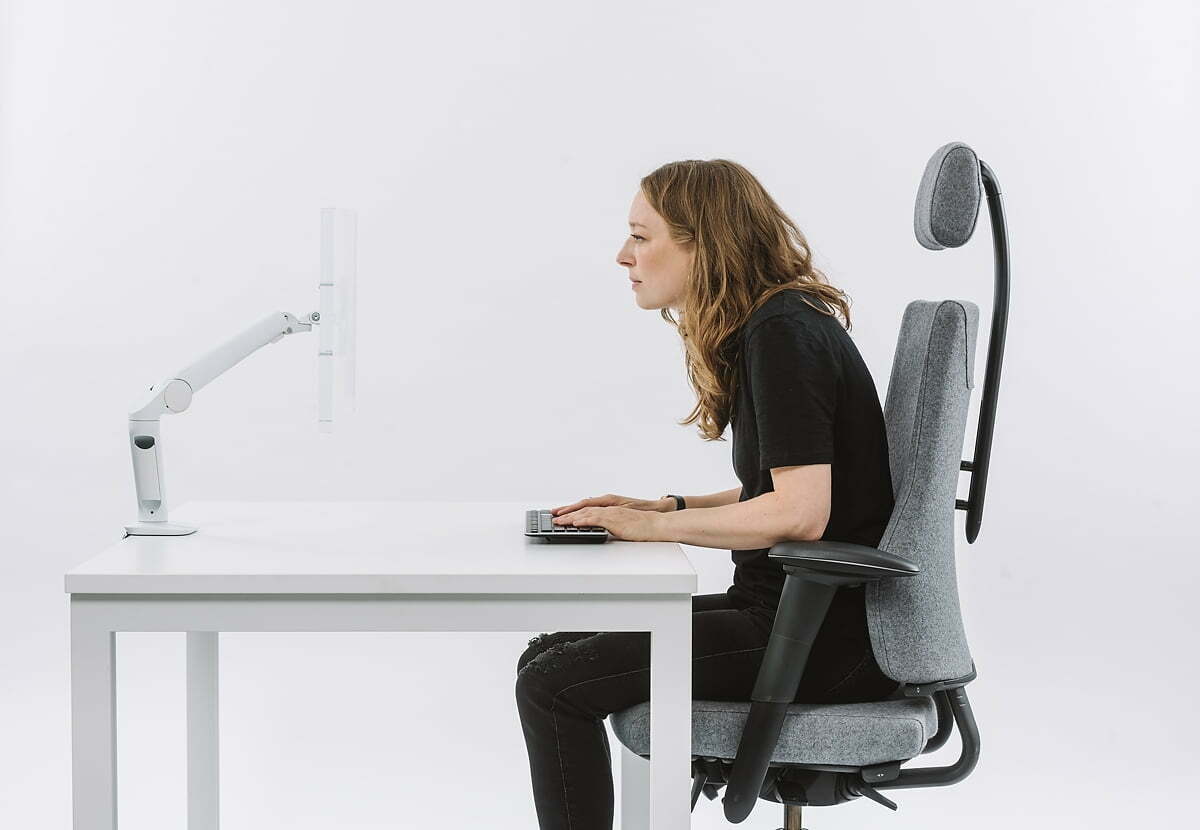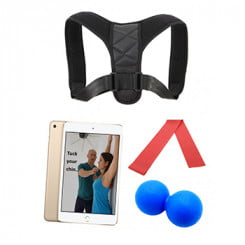Nearly every day-to-day work action (when not done correctly) from using a keyboard to picking up the phone can contribute to rounding shoulders, hunching, or our arch-nemesis……’ turtle necking’.
What’s is Postural Kyphosis?
In severe cases, rounded shoulders and poor posture can lead to Postural Kyphosis which essentially means that the thoracic vertebrae in the spine develop an abnormal curve at the top and gives the appearance of a hunched back. Poor posture follows us throughout our lives and contributes to the gradual rounding of the spine:
- Phones – Dropping the head and necks to use phones and devices
- Chairs – Consistent slouching all day, every day
- Inactivity – and sedentary behaviour (See above)
- Poor eyesight – means that we lean forward to see the screen
- Heavy bags – heavy, unevenly loaded bags can pull and stretch the ligaments and muscles in backs from a young age.
What are the symptoms?
Mild to moderate Postural Kyphosis doesn’t always have symptoms. If the spine is noticeably curved and/or you have persistent back pain or stiffness, first and foremost we would recommend speaking to your GP. Some people find that they become self-conscious of the shape of their back and the emotional toll should be acknowledged.
How can you prevent it?
It’s easy to say ‘stop slouching’ but it’s difficult when habits become so ingrained. Our posture can be affected by anything from confidence levels to weight, to stress. A multifaceted approach needs to be taken to help us keep up better posture habits for life:
Adjust your screen – When we struggle to see the screen, our natural reaction is to lean forward to get a better view. Make sure that you keep the top of your screen in-line with your eyebrows and positioned at arm’s length, and have regular eye tests to see if changes in your vision call for a new pair of glasses.
The average human head weighs 10lbs/4.5kgs (nearly five bags of sugar). For every inch that your head moves out in front of your body, you add an additional 10lbs of pressure to your spine.
That means that most of us are texting or typing whilst wearing the equivalent of a six-year-old child around our necks!

Set up your workstation correctly – If you use a screen for an hour or more a day for work, you need a DSE assessment to make sure that your workstation is up to scratch. Better yet, if you make yourself familiar with how to set up an ergonomic workstation, you’ll be able to make adjustments every time a colleague ‘borrows’ your chair.
If you are working from home, create a dedicated workspace to remind yourself not to work from the sofa (or bed) so that you can properly support your back.
Try a posture correcter – We’ve recently been trialling a posture corrector and it’s so surprising to see (even as posture purists) how much we round our shoulders throughout the day. We wore the posture corrector for an hour a day and rather than holding your shoulders back, it tightens when you round your shoulders to physically remind you not to slouch.
Used in conjunction with the ‘peanut’ posture ball, resistance band and Physio recommended stretches, we could feel ourselves walking taller after just a week.
Keep active – Modern workplaces have dramatically reduced the amount of time that we spend upright and active. If you’re not in the habit of doing regular exercise, try to ease yourself into more activity by taking a brisk stroll on your lunch break.
We’ve even found games consoles are a great way to enjoy gentle exercise. Especially with the release of the Nintendo ring fit adventure (trust us it’s a surprisingly good workout).








